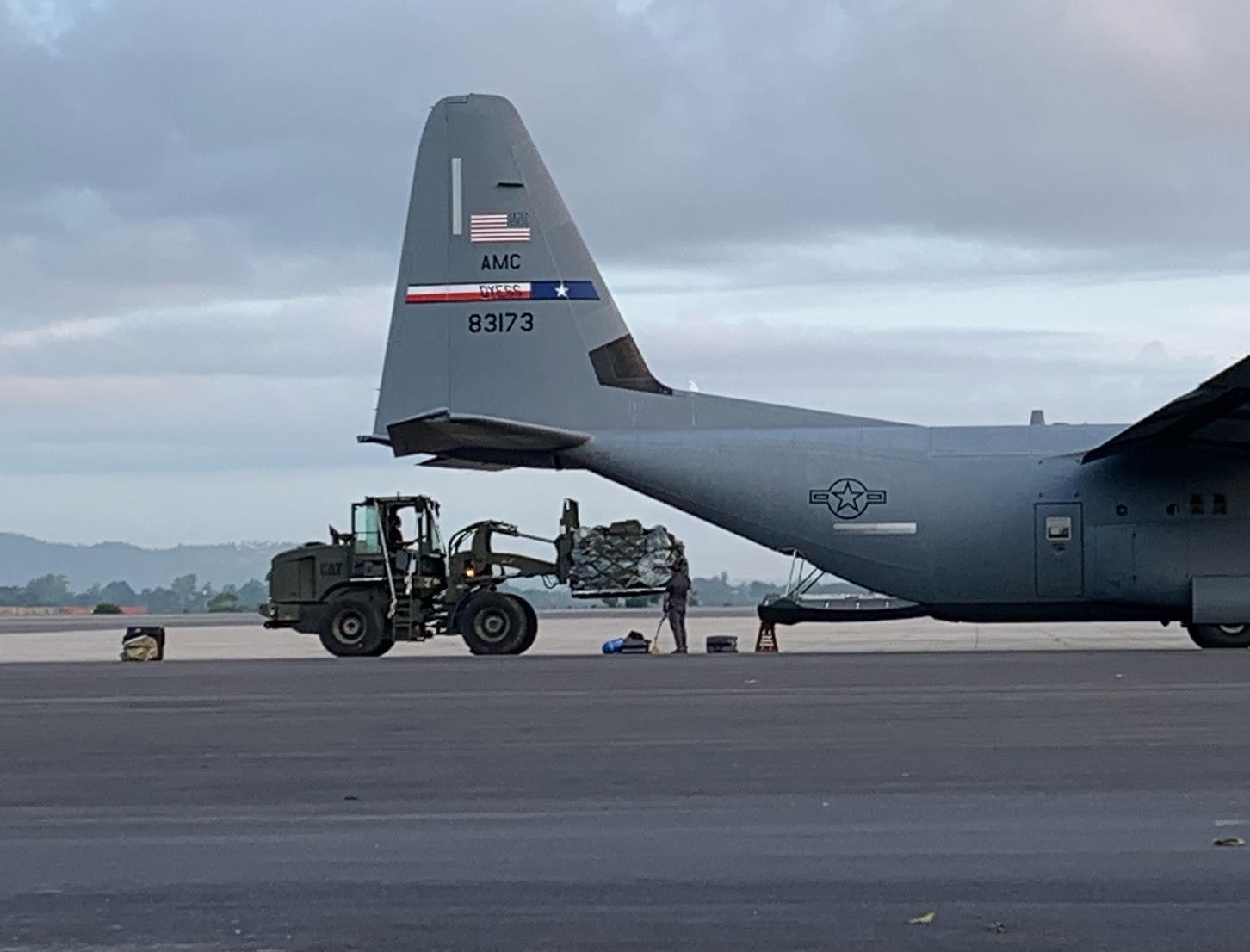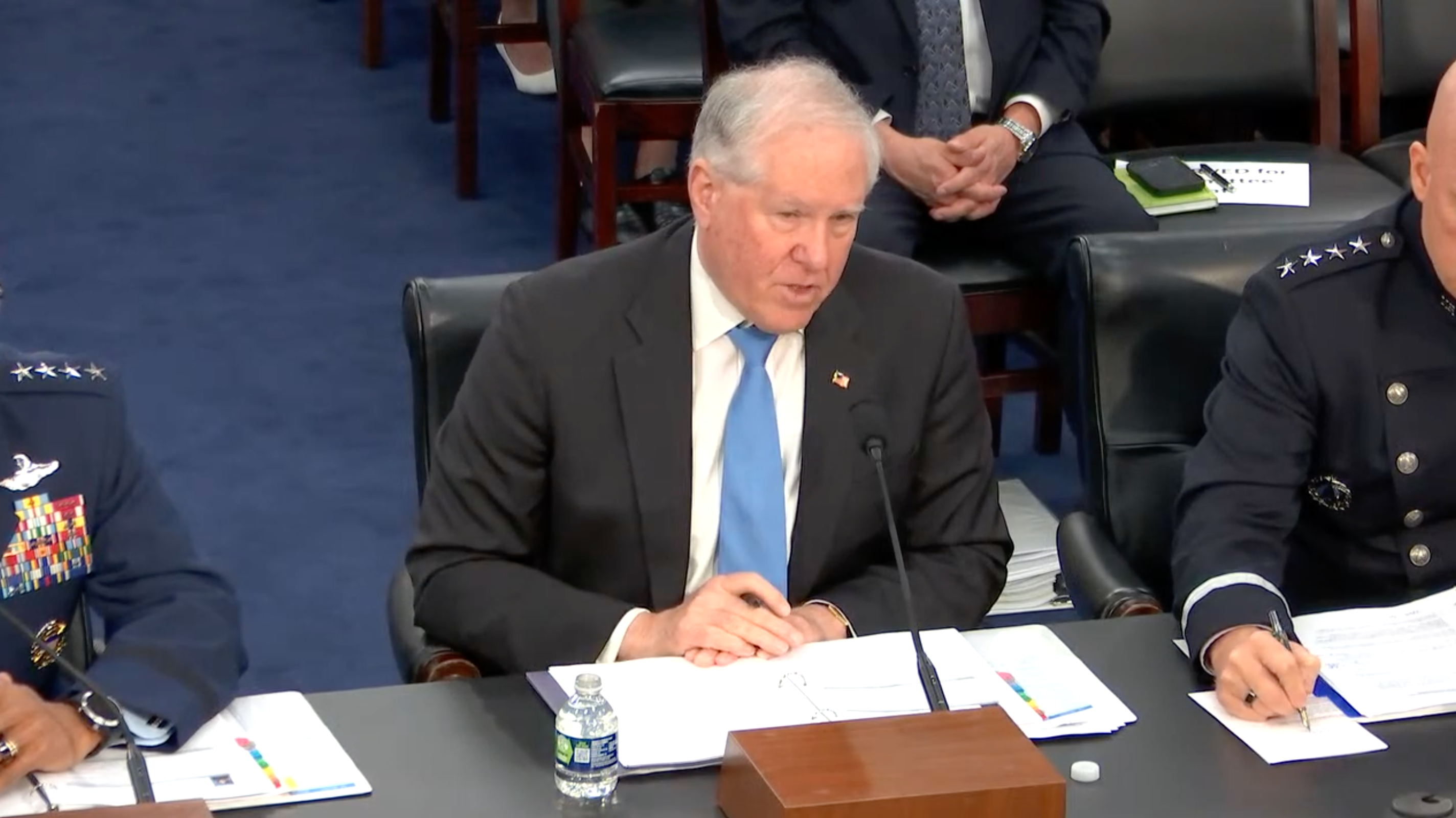It’s been more than three-and-a-half years since Hurricane Michael pummeled Tyndall Air Force Base, Fla., severely damaging or destroying 95 percent of the base’s 1,300 structures.
On May 10, the base took a major step in its long build back to become the “Base of the Future” with the awarding of a $532 million military construction contract.
Including contingencies and contract oversight, the contract’s total cost is $604 million, the Air Force said in a release, making it the largest military construction contract on record in the Air Force database, which dates to 2008.
Those hundreds of millions of dollars will go toward 11 projects to support the flight line for Tyndall’s F-35s, including:
- Three aircraft maintenance unit hangars
- Maintenance fuel cell hangar
- Weapons load training hangar
- Group headquarters
- Squadron maintenance complex
- Flight simulator facility
- Corrosion control facility
- Parking apron
- Aircraft support equipment storage
The U.S. Army Corps of Engineers awarded the contract to Hensel Phelps, a Colorado-based construction company that ranks as one of the nation’s biggest construction contractors. The Army Corps of Engineers is partnering with the Air Force Civil Engineer Center’s Natural Disaster Recovery Division in the reconstruction.
“The rebuild gives us the unique opportunity to reimagine how we accommodate the needs of the F-35,” said Col. Travis Leighton, the Natural Disaster Recovery Division chief. “We’re leveraging cutting-edge technology to increase cybersecurity and perimeter defense, enhance base safety, and equip Airmen to execute the missions of today and tomorrow.”
Construction on the projects is slated to begin in late summer 2022. No projected end date was given.
As part of its “Base of the Future” concept, the buildings being constructed as part of these projects will be wind-resistant up to 165 miles per hour and have finished floor elevations that account for up to seven feet of future sea level rise. They’ll also have “smart” building technologies such as occupancy sensors.
While this contract award is the Air Force’s biggest one ever, it represents just a portion of the funds needed to rebuild Tyndall. In fiscal 2019 and 2020, Congress appropriated $5.3 billion in military construction for the service to build back both Tyndall and Offutt Air Force Base, Neb., which was devastated by major flooding around the same time.
The majority of that $5.3 billion was for Tyndall, with estimates at the time ranging from $4.3 billion and $4.9 billion. However, officials told lawmakers in early May that they need still more money for the rebuilding processes—the Air Force’s 2023 MILCON budget request included an unfunded priority of $286 million for natural disaster recovery at Tyndall, Offutt, and Joint Base Langley-Eustis, Va., and Brig. Gen. William H. Kale III, the Air Force director of civil engineers, said more money will likely be requested in fiscal 2024 as well.
It will take a little bit longer after that for the rebuilding process to wrap up—Kale projected an end date in 2027 or 2028.









